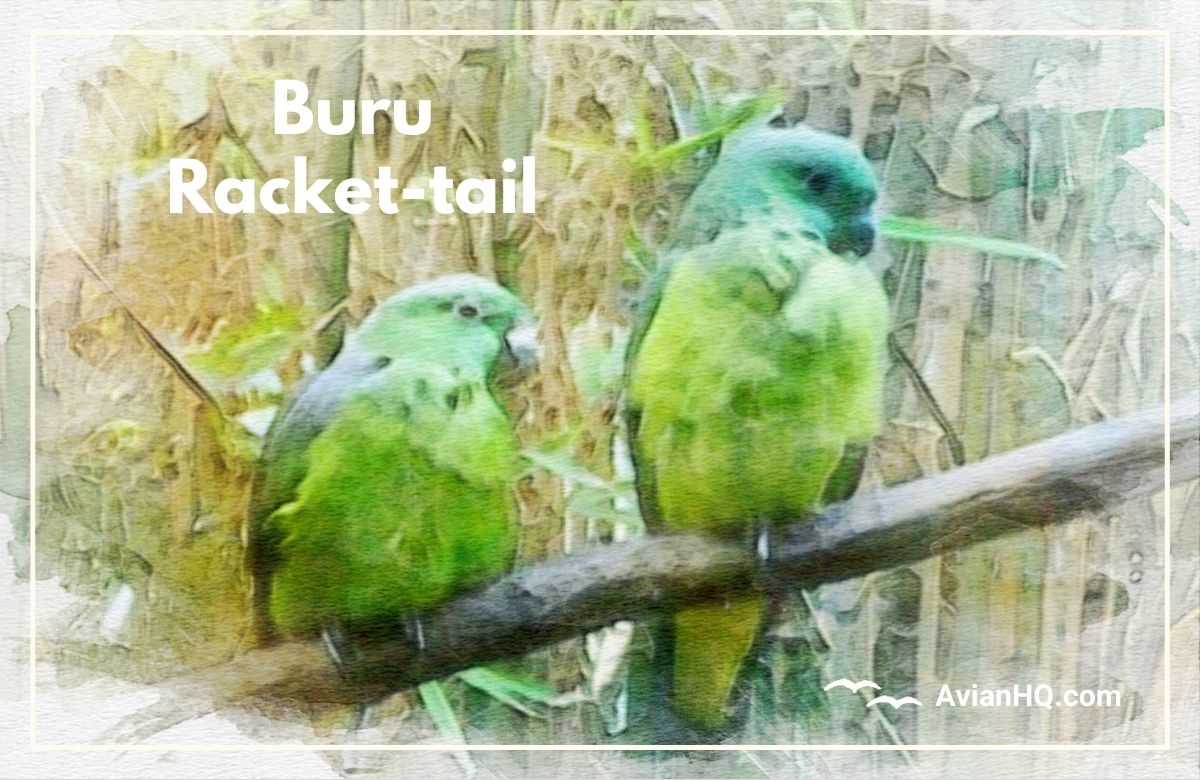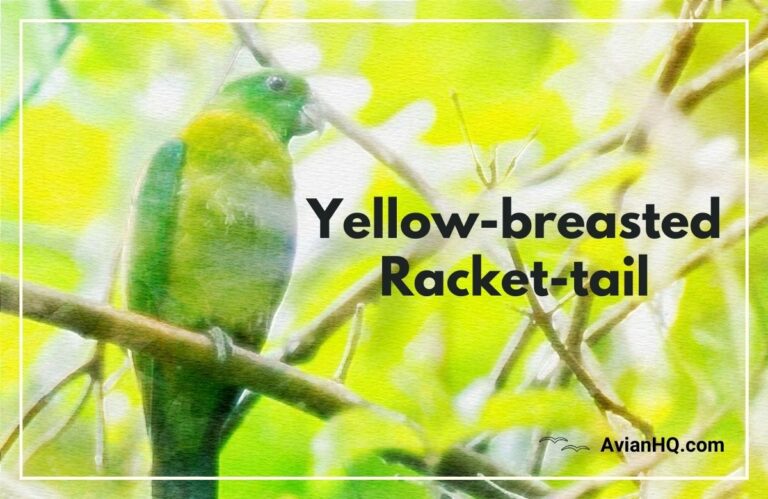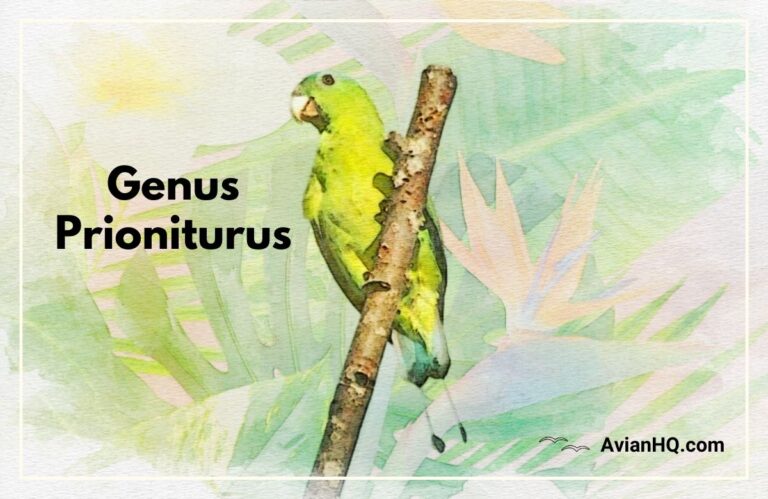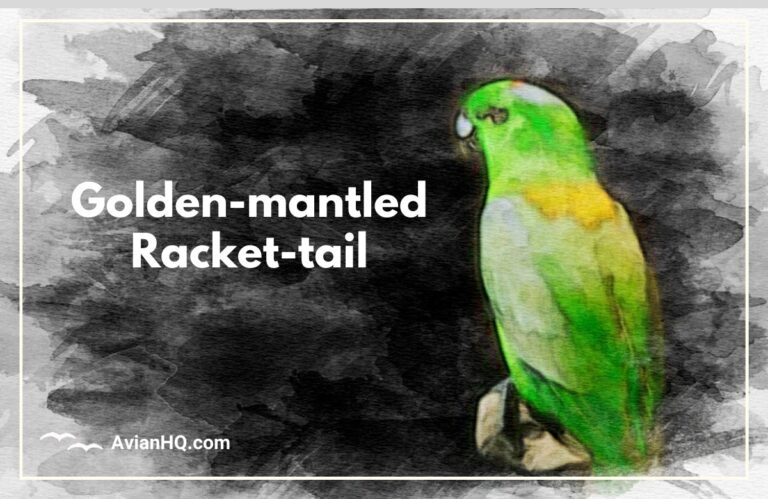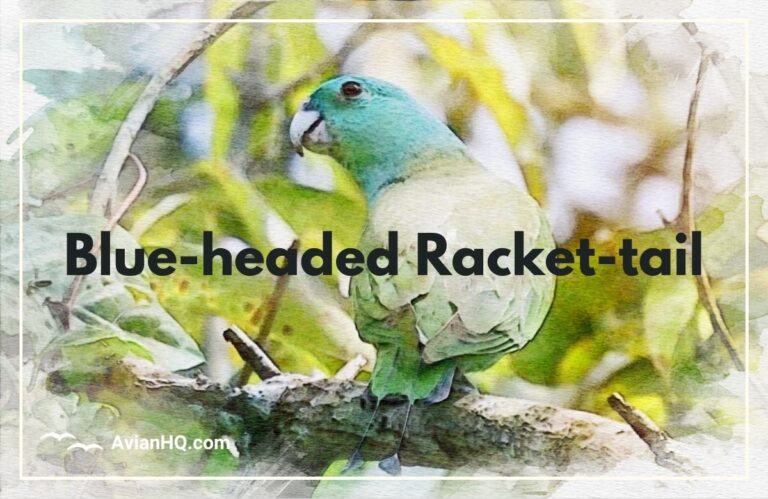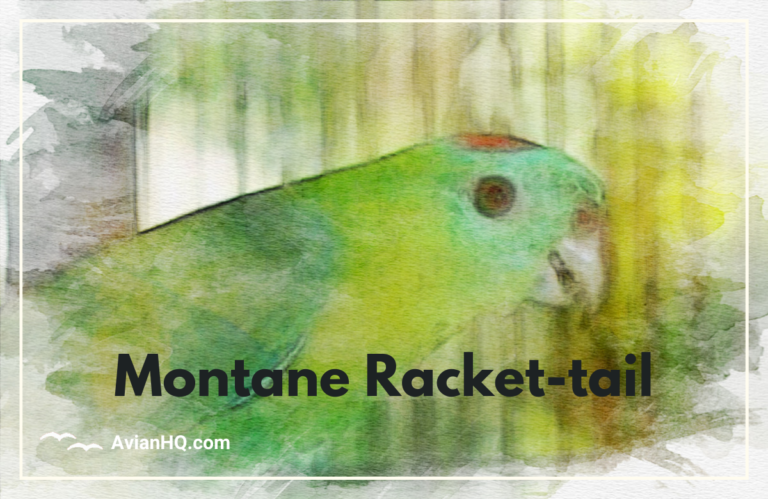Buru Racket-tail (Prioniturus mada)
The islands of Indonesia are home to an incredible diversity of life, with new species still being discovered even today. One such endemic bird is the Buru Racket-tail (Prioniturus mada), a vividly plumed parrot found only on the forested slopes of Buru Island in the southern Moluccas archipelago. Though related to other racket-tailed parrots of the region, the Buru Racket-tail has a distinctive appearance and specialized habitat, making it a flagship species for the conservation of Buru’s endemic biodiversity.
This medium-sized parrot earned it’s name from the unique racket-shaped feathers of the male’s tail. But beyond the tail, the Buru Racket-tail shows a rainbow of colors in it’s plumage, from emerald greens to deep blues and sunny yellows. While patchy in distribution across Buru’s mountain forests, study has shown the species to be more abundant than previously thought, though deforestation and trapping continue to pose threats.
In this comprehensive guide, we will cover everything there is to know about the elusive and endangered Buru Racket-tail–from physical traits to breeding habits, conservation challenges, and this parrot’s role in the island ecosystems of Indonesia. Along the way, you’ll gain deeper insight into this tiny island’s outsized ecological importance on a global scale.
History and Naming
The Buru Racket-tail was first documented scientifically in the late 19th century, during early surveys of Indonesia’s avifauna by European naturalists. The species was given it’s formal scientific name Prioniturus mada in 1897 by German ornithologist Otto Finsch.
The specific epithet mada refers to the 3000 ft (915 m) tall Mount Mada located on Buru Island, which falls within the range of the parrot. So the bird’s full scientific name essentially translates to “Buru Mountain Racket-tail.”
Prior to European encounter, the distinctively shaped and colored parrot was surely known to indigenous peoples of Buru. However, without written records, traditional names and knowledge of the species have been lost over time. Since scientific description in the 1890s, the Buru Racket-tail has commonly been referred to as such in ornithological literature.
Physical Appearance
The Buru Racket-tail measures approximately 12.5 in (32 cm) in length. It weighs between 3.5-5 oz (100-140 g).
Several features stand out in the male Buru Racket-tail’s vibrant plumage:
- Crown and nape blue-gray
- Upper mantle bluish-gray
- Lower mantle washed with blue/purple
- Lesser wing coverts blue/purple
- Bend of wing blue/purple
- Yellow undertail coverts
- Central tail feathers green
- Outer tail feathers blue-tipped
The female lacks the blue/purple on the nape, mantle, and bend of wing. The blue of the crown is also reduced. Her tail rackets are shorter than the male’s.
Juveniles of both sexes lack the racket-shaped tail feathers. Young males may show some blue on the nape.
Habitat and Distribution
The Buru Racket-tail is endemic to the island of Buru in the southern Moluccas archipelago of Indonesia. Within it’s limited global range, the parrot inhabits elevations up to approximately 5,200 ft (1,600 m).
The species is found across diverse forest habitats on Buru’s mountainous landscape, including:
- Old growth forests
- Selectively logged forests
- Secondary regrowth forests
- Remaining treed areas in cultivated landscapes
Though distributed unevenly across the island, the Buru Racket-tail appears most common at elevations around 2,000 ft (600 m).
It’s range is restricted to Buru, where the parrot is found nowhere else in the wild. However, the species was likely more widespread before human-driven deforestation reduced and fragmented it’s forest habitat. Protecting remaining old growth and allowing regrowth of degraded areas may expand the extent of suitable habitat for the endemic parrot.
Diet
The diet of the Buru Racket-tail consists primarily of various plant foods foraged in the forest canopy:
- Wild fruits
- Berries
- Seeds
- Flowers
The parrot’s strong flying ability and curved beak allow it to exploit a wide diversity of fruiting trees and flowering plants across it’s montane habitat.
As with many parrots, the Buru Racket-tail appears to track and move between certain productive fruiting trees like figs. These seasonal movements in response to ripening fruits are likely key to the species’ survival.
Breeding and Reproduction
The Buru Racket-tail nests in tree cavities, either natural hollows or old woodpecker holes. The parrot’s breeding season is from December to February.
During this period, the female lays a clutch of up to 5 eggs in the chosen nest. She then incubates the eggs for approximately 26 days before they hatch.
Both parents share duties feeding the altricial chicks once they’ve hatched. The chicks are brooded in the nest for around 6 weeks as they grow their juvenile plumage.
After fledging from the nest, the young Buru Racket-tails remain dependent on their parents for additional weeks as they learn to forage on their own.
Based on related parrot species, Buru Racket-tails likely reach sexual maturity by 18 months to 2 years of age. The typical lifespan in the wild is unknown but may reach 10-15 years.
Behavior
The Buru Racket-tail has a social, gregarious nature. It is most often observed in small flocks of up to 10 individuals, likely a mated pair and their previous offspring.
As a flock, the parrots travel together between fruiting and flowering trees across their mountain habitat. Their loud contact calls allow the flock to coordinate movement and forage efficiently.
Pairs preen each other frequently to reinforce the pair bond. The broader flock also provides additional safety from predators like raptors compared to solitary life.
Conservation Status
Due to it’s small, restricted range and dependence on threatened forest habitat, the Buru Racket-tail is considered a conservation priority. However, it’s precise population status remains uncertain.
The species is currently classified as Least Concern on the IUCN Red List. But it meets the criteria for a “restricted range” species, meriting ongoing monitoring and habitat protection efforts.
Major threats to the Buru Racket-tail include:
- Deforestation – from logging, mines, plantations
- Live capture for the pet trade
- Habitat degradation from human disturbance
Conservation actions needed:
- Preservation of remaining old growth forest areas
- Allowing and improving secondary forest regrowth
- Ecotourism potential based on this charismatic species
- Awareness campaigns on avoiding pet trade
The Buru Racket-tail can serve as an effective flagship species for it’s restricted habitat. Protecting sufficient habitat for this species will benefit many other endemic organisms on Buru Island.
Comparison to Related Species
The Buru Racket-tail belongs to the genus Prioniturus in the parrot family Psittaculidae. This genus contains 9 other species of racket-tailed parrots found across Indonesia and the Philippines.
Some key differences of the Buru Racket-tail from it’s closest relatives:
- Golden-mantled Racket-tail Parrot (P. platurus) – Sulawesi and nearby islands including Siau, Lembeh, Togian, Banggai, Muna, and Butung. Has more extensive blue on back, red on belly
- Blue-crowned Racquet-tail (P. discurus) – Distributed across Jolo, Mindanao, Olutanga, Basilan, Guimaras and Luzon. Has blue crown but green nape
- Yellow-breasted Racquet-tail (P. flavicans) – Northern Sulawesi, Indonesia and nearby smaller islands. Has golden/yellow back coloration
In addition, the Buru Racket-tail is the only Prioniturus parrot endemic to just a single island. Most other species have wider distributions across multiple islands.
Despite resemblance to relatives, the Buru Racket-tail occupies a unique evolutionary niche isolated on Buru Island for millennia. Protecting this species prevents the extinction of a genetically distinct lineage.
Importance of Species
As an Indonesian endemic with specialized habitat requirements, the Buru Racket-tail has high value for representing Buru Island’s unique biodiversity.
Though parrots are widespread in Indonesia, the Buru Racket-tail depends fully on Buru’s montane forests. It cannot thrive elsewhere.
Thus the parrot serves as an “indicator species” – it’s population trends signal the health of Buru’s ecosystems as a whole. It also represents less conspicuous life forms in the forest community.
If the Buru Racket-tail were to go extinct, it would represent both a significant scientific loss and the likely disappearance of unknown forest organisms.
With charismatic appeal and flagship status, this rare parrot can garner support for habitat conservation from researchers, donors, and ecotourists. This “umbrella species” effect also indirectly protects other endemic birds, plants, insects sharing it’s forest home.
Conclusion
The brilliantly plumed Buru Racket-tail remains a mysterious inhabitant of Buru Island’s threatened forests. Gaining more knowledge of it’s ecology through study, while protecting it’s montane habitat, are key steps toward securing a future for this endemic Indonesian parrot.
As a flagship and indicator species, the Buru Racket-tail exemplifies the unique biodiversity of it’s island home. It represents the health and continuity of Buru’s ancient forests amidst rapid modern change. Conserving this singular bird and it’s home helps preserve Indonesia’s irreplaceable natural heritage.

